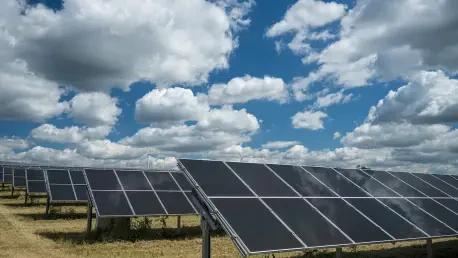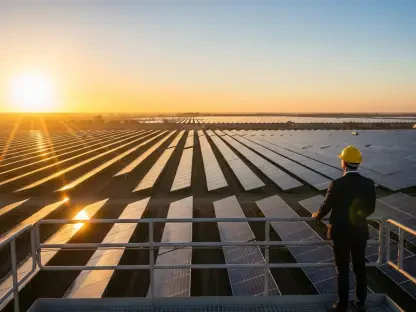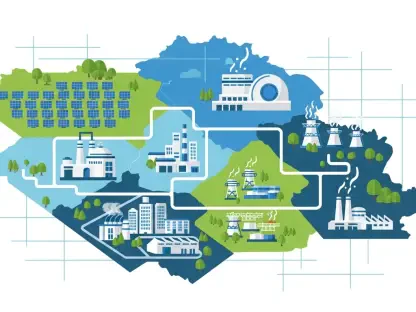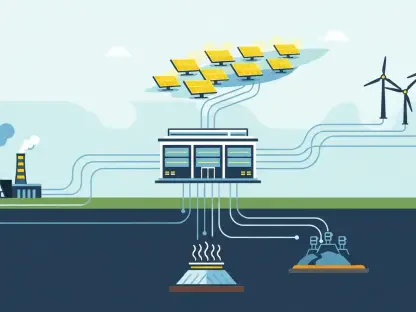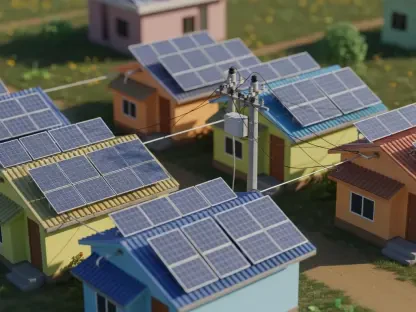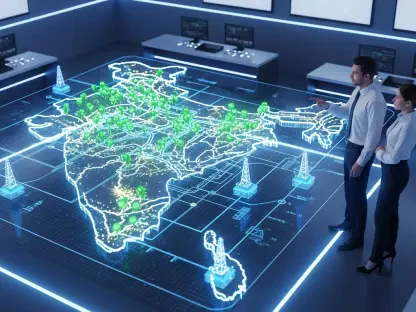SAEL Industries Ltd has embarked on an ambitious journey set to redefine India’s energy dynamics through a remarkable $954.04 million investment in Uttar Pradesh’s solar manufacturing. This bold move not only promises to elevate SAEL’s role in the renewable landscape but also aligns closely with India’s strategic intentions to become a powerhouse in domestic solar production. With the planned 5-gigawatt (GW) annual production capacity, the project is poised to shift the national energy narrative toward sustainability and self-reliance.
Analyzing India’s Solar Evolution
India’s venture into the solar sector marks a crucial shift from its historical reliance on fossil fuels, propelled by both policy reforms and international environmental goals. Although the country boasts an impressive 80 GW module production capacity, solar cells are notably limited to 15 GW, with the majority dependent on Chinese imports. This context underscores why SAEL’s establishment in the local production sphere is not merely an investment but a strategic reorientation aimed at reducing import reliance and invigorating domestic technological advances.
Delving into SAEL’s Strategic Investment
Positioning Within the Solar Sector
SAEL Industries emerges as a formidable entity with 6.7 GW solar power assets and an ambitious plan to elevate this to 20 GW by 2030. The development of a 5 GW manufacturing facility underscores its commitment to expanding domestic outputs and minimizing foreign dependencies. Such a strategic endeavor provides potential for increased competitiveness within the sector despite challenges that involve logistical complexities and evolving market norms. The investment holds transformative potential, positioning SAEL at the forefront of energy innovation.
Market Dynamics and Policy Influence
India’s policy environment plays an indispensable role in shaping the feasibility of SAEL’s initiatives. By 2026, government mandates stipulate the use of locally-produced solar cells, setting a promising landscape for SAEL. Nonetheless, the industry faces challenges like global market fluctuations and policy changes, although they may be mitigated through job creation and environmental progress. The policy framework thus necessitates astute strategic planning to leverage growth opportunities effectively.
Integrating Innovation and Regional Opportunities
The diverse landscape of India presents both challenges and opportunities for the solar sector. Energy demand varies across regions, necessitating customized solutions. SAEL’s initiative can introduce innovative techniques such as advanced manufacturing and smart grid integration that could spur regional economic growth. Although complexities exist, they also present potential for developing specialized hubs, capitalizing on regional strengths for long-term prosperity and diversification.
Projections and Future Trends in Solar Energy
The solar sector is on the brink of technological breakthroughs, including efficient storage solutions and AI-based energy management. Furthermore, emerging financial instruments, like green bonds, along with government incentives, could stimulate industry expansion. SAEL stands to benefit from these evolving landscapes, positioning itself strategically amidst regulatory changes that promise to reshape the solar market into a globally competitive industry.
Strategic Pathways and Recommendations
The review of SAEL’s approach suggests several strategies for stakeholders. Forming strategic alliances with policymakers could hasten regulatory processes. Meanwhile, sustained investments in research and development can enhance technological innovation, bolstering SAEL’s leadership within the industry. For businesses and consumers, understanding SAEL’s growth strategies offers insight into sustainable practices harmonized with profitability, encouraging a shift toward environmentally responsible investment decisions.
Looking Back and Looking Forward
Reflecting on SAEL’s investment highlights its potential not only to revolutionize India’s energy framework but also to set a benchmark for sustainable growth on a global scale. As the industry grows, its importance escalates, emphasizing the value of continued investment and innovative approaches in the renewable arena. SAEL’s example inspires sustainability advocates to harness these insights, propelling the broader green movement into the future.
